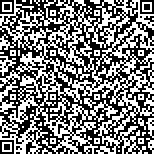本文已被:浏览 824次 下载 1261次
Received:November 22, 2019 Revised:December 16, 2019
Received:November 22, 2019 Revised:December 16, 2019
中文摘要: 针对相机抖动和旋转造成的观测目标物定位不准确的问题, 提出了新颖的快速抗旋转匹配算法, 该方法利用与运算形成卷积运算的模式, 使匹配时间呈指数级下降. 大量实验结果表明, 利用该算法, 数字摄像能见度仪的目标物自动定标准确, 单次定标时间平均为24.2 ms, 在相同情况下比原始算法至少快200倍以上, 且观测准确度比普通算法提升7倍多, 比手动定位观测提升将近5倍. 基于该算法的数字摄像能见度仪测量结果符合世界气象组织对能见度仪研制标准的要求, 且价格更低, 具有广阔的应用前景.
Abstract:In order to solve the problem of inaccurate target location caused by camera jitter and rotation, a novel fast anti-rotation matching algorithm is proposed, which uses the convolution operation mode formed by the operation to reduce the matching time exponentially. A large number of experimental results show that using this algorithm, the target automatic calibration of digital camera visibility instrument is accurate, the average time of single calibration is 24.2 ms, which is at least 200 times faster than the original algorithm in the same situation, and the observation accuracy is more than 7 times higher than the ordinary algorithm, nearly 5 times higher than the manual positioning observation. The measurement results of the digital camera visibility meter based on the algorithm meet the requirements of the World Meteorological Organization for the development of visibility meter, and the price is lower, so it has a broad application prospect.
文章编号: 中图分类号: 文献标志码:
基金项目:国家自然科学基金 (41575156)
引用文本:
雷鸣,王琪,聂凯,陈凯华,王京丽.数字能见度仪中目标物自动定位技术.计算机系统应用,2020,29(6):247-254
LEI Ming,WANG Qi,NIE Kai,CHEN Kai-Hua,WANG Jing-Li.Automatic Target Location in Digital Visibility Instrument.COMPUTER SYSTEMS APPLICATIONS,2020,29(6):247-254
雷鸣,王琪,聂凯,陈凯华,王京丽.数字能见度仪中目标物自动定位技术.计算机系统应用,2020,29(6):247-254
LEI Ming,WANG Qi,NIE Kai,CHEN Kai-Hua,WANG Jing-Li.Automatic Target Location in Digital Visibility Instrument.COMPUTER SYSTEMS APPLICATIONS,2020,29(6):247-254


